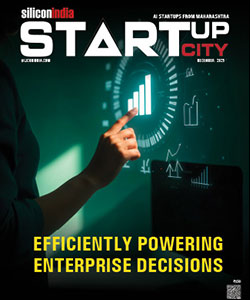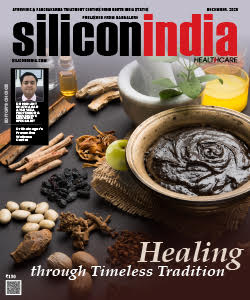Digital Health Card: A Revolution in India's Healthcare Facilities

Since the pandemic has hit the world severely, healthcare has become a significant concern globally. The Indian government has stepped forward and initiated Ayushman Bharat Digital Mission (ABDM) to include every citizen's unique health ID. Recently, on the launch of ABDM, Prime Minister Narendra Modi said, "potential of bringing a revolutionary change in India's healthcare facilities." The digital initiative also includes the creation of a digital healthcare professionals and facilities registry.
Ways to get a Unique health ID
To be a part of the ABDM, one needs to create a health ID, a differently generated 14-digit number. Generally, it will use for three objectives: unique identification, authentication, and threading of the beneficiary's health records, only with their informed consent, across multiple systems and stakeholders.
Self-registration on the portal or download the ABMD Health Records app on mobile is a way to get a health ID. Furthermore, a request to create a health ID at a participating health facility, which may comprise government or private hospitals, community health centers, and wellness centers of the government across India, would also assist anyone to get a health ID.
The recipient will also have to establish a Personal Health Records (PHR) address for consent management and future sharing of health records.
PHR address is a simple self-declared username to sign into a Health Information Exchange and Consent Manager (HIE-CM). Each health ID will need linkage to a consent manager to permit sharing of health records data.
HIE-CM, an application, facilitates sharing and linking of personal health records for a user. Presently, one can utilize the health ID to sign up on the HIE-CM; the National Health Authority (NHA), nevertheless, says multiple consent managers are expected to be available for patients to choose from shortly.
The requirement to register for Health ID
Presently, ABDM accepts health ID creation via mobile or Aadhaar. The official website asserts that ABDM will soon introduce features that allow health ID creation with a PAN card or a driving license. So, to create the ID through mobile or Aadhaar, one needs to share details on name, year of birth, gender, address, mobile number/Aadhaar.
The registration with Aadhaar number will generate an OTP sent to the mobile number linked to the Aadhaar. If one has not linked it to their mobile, the beneficiary should visit the nearest facility and opt for biometric authentication using the Aadhaar number. After successful authentication, they will get their health ID at the participating facility.
When it comes to the query of details security, the NHA claims ABDM does not store any of the beneficiary health records. The records are collected and saved by healthcare information providers according to their "retention policies" and are "shared" over the ABDM network "with encryption mechanisms" only after the beneficiary declares consent.
The beneficiary can delete and exit the platform on their wish. The NHA confirms that ABDM supports such a feature. It provides two options: a user can permanently delete or temporarily deactivate their health ID.
On cancellation, the unique health ID will be permanently deleted, along with all demographic details. The beneficiary will not reclaim any information tagged to that health ID in the future. They won't access ABDM applications or any health records over the ABDM network with the deleted ID.
On deactivation, the beneficiary will lose access to all ABDM applications only for the period of deactivation. Until they reactivate their health ID, they should not share the ID at any health facility or share health records over the ABDM network.
Available conveniences for the beneficiaries
The digital health records can be accessed right from admission through treatment and discharge. Additionally, health ID allows linking personal health records to create a long-term health history.
An expected novel feature will facilitate access to verified doctors across the country. The beneficiary can generate a health ID for their child and digital health records right from birth, and they can also add a nominee to reach her health ID and view or manage the personal health records. Moreover, there will be much complete access, with the health ID available to people who don't possess phones, applying assisted methods.
Furthermore, private hospitals also get collateral with the government's digital ID. The NHA has begun the NDHM Sandbox: a digital architecture that supports private players as part of the National Digital Health Ecosystem as health information providers or health information users.
The private player can send a request to NHA to check its system with the Sandbox environment.
Afterward, the NHA will provide the key to the private players to access the Sandbox environment and the health ID application programming interface (API). Then, the private players can create a Sandbox health ID, integrate its software with the API, and register the software to test link records and process health data consent requests. Once the system is tested, it will ask for a demo to the NHA to progress. After a satisfying demo, the NHA certifies and impanels the private hospital.
Significance of the initiative
As per the PM statement, the initiative has the potential to "increase the ease of living" along with "simplifying the procedures in hospitals."
At the initial stage, there is a limitation on the use of digital health ID in hospitals. It is restricted to only one hospital or a single group and is mainly concentrated in large private chains. Hence, the novel initiative will make the whole ecosystem on a single platform.
For example, someone is getting treated at AIIMS, Delhi, and willing to move to another hospital in a different city. Suppose the hospital is also on the centralized ecosystem. In that case, the patient does not require physical health records or files of several years of treatment, as the medical history is promptly available.
The system also makes it quicker to find doctors and specialists nearest to you. The majority of people depend on recommendations from family and friends for medical consultation, but now the new platform will assist the patient whom to reach out to and who is the nearest. It will also recommend labs and drug stores for better tests.
Read More News :
Instagram initiates its largest creator education programme in India


.jpg)
